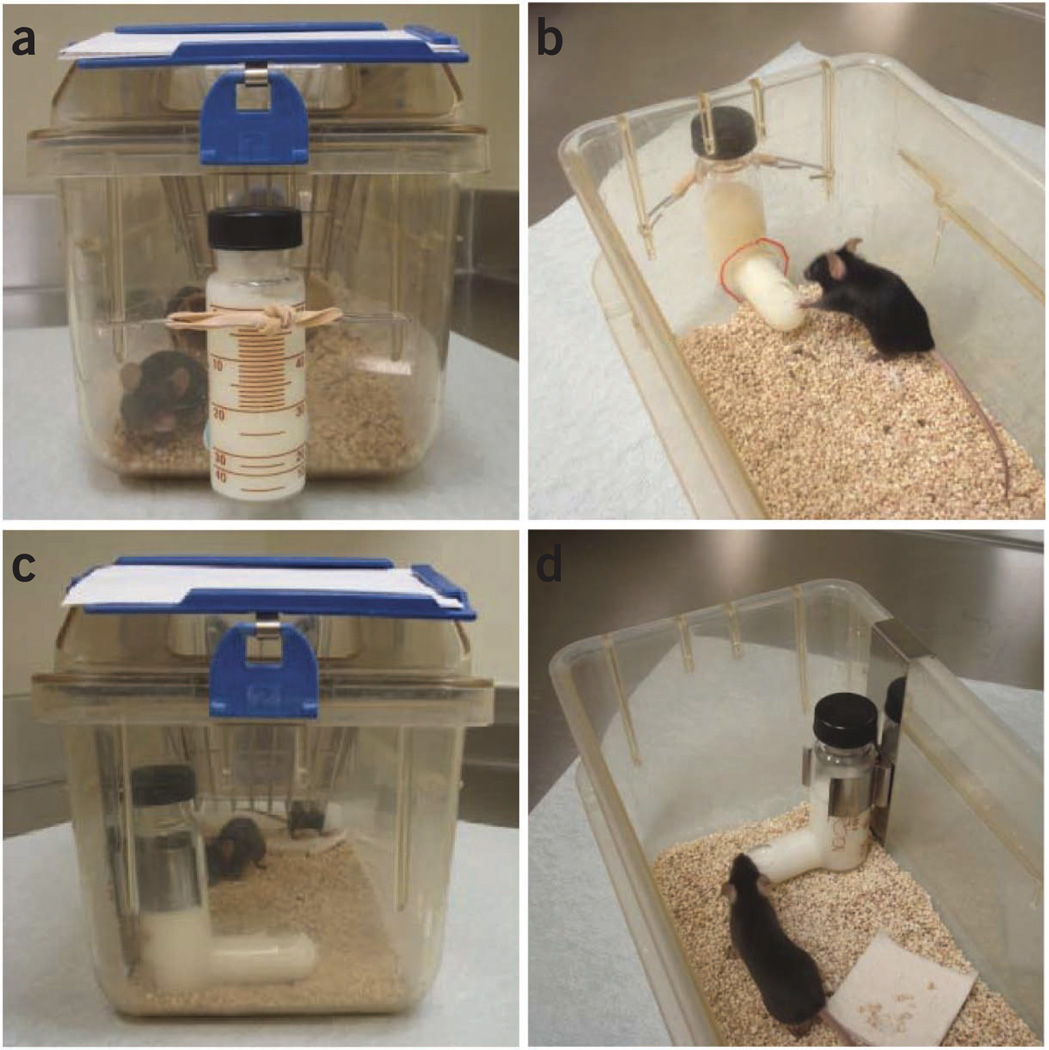Figure 2.
Cage and feeding-tube setup. (a,b) Photos showing modified mouse cages. A hole is drilled at the bottom of the front side of the cage to insert the mouth of the feeding tube into the cage. The feeding tube is held using a rubber band tied to steel wire hooks. (c,d) Photos showing commercial feeding-tube holders designed to hang over the lip of the cage. Note that it is much easier to change the feeding tubes in the modified mouse cages (a,b) than those in tube holders (c,d). Perforations made in cages must be consistent in their location to ensure that the diet in the feeding tube remains accessible after placement.

